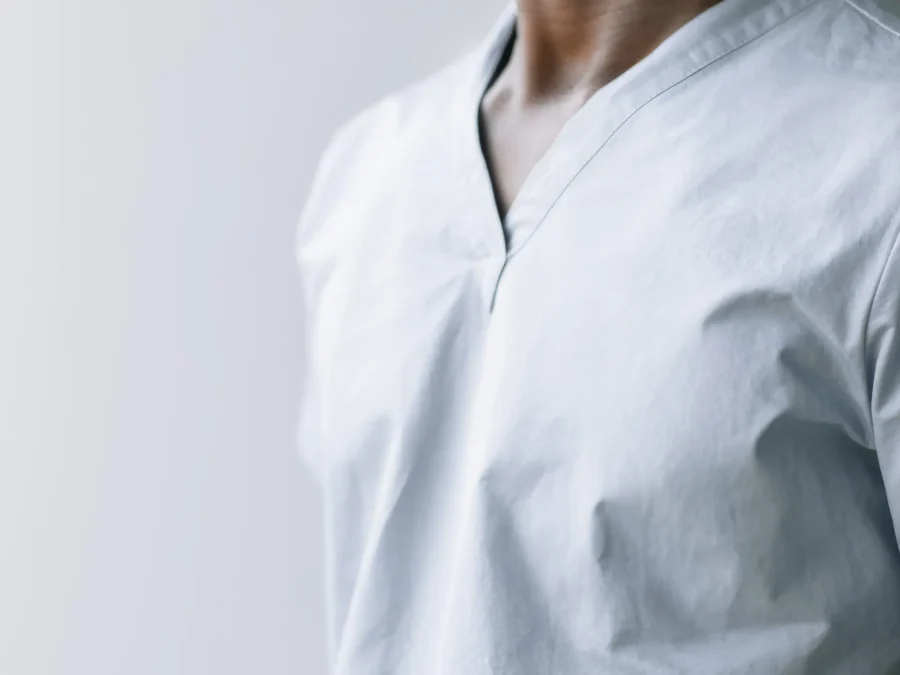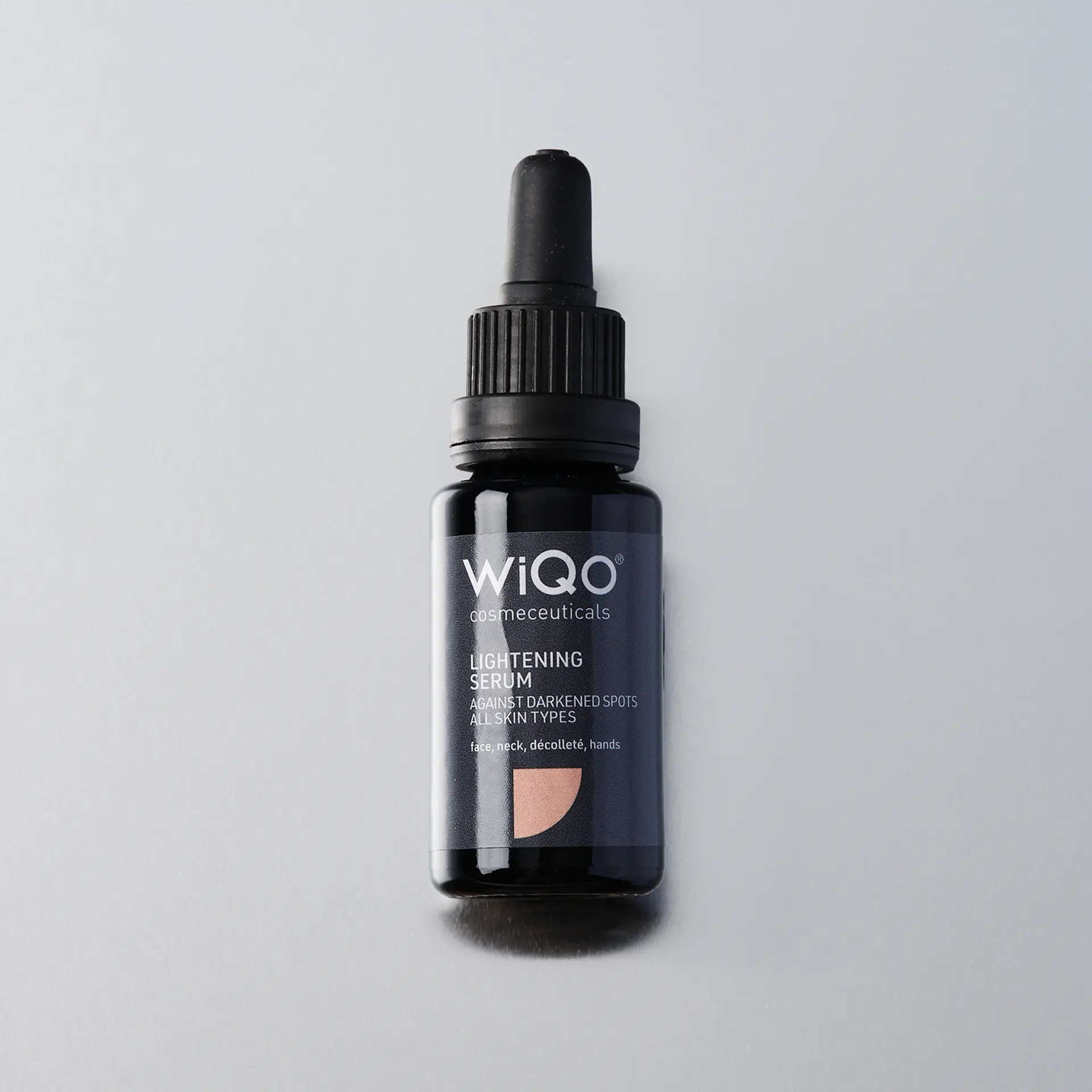
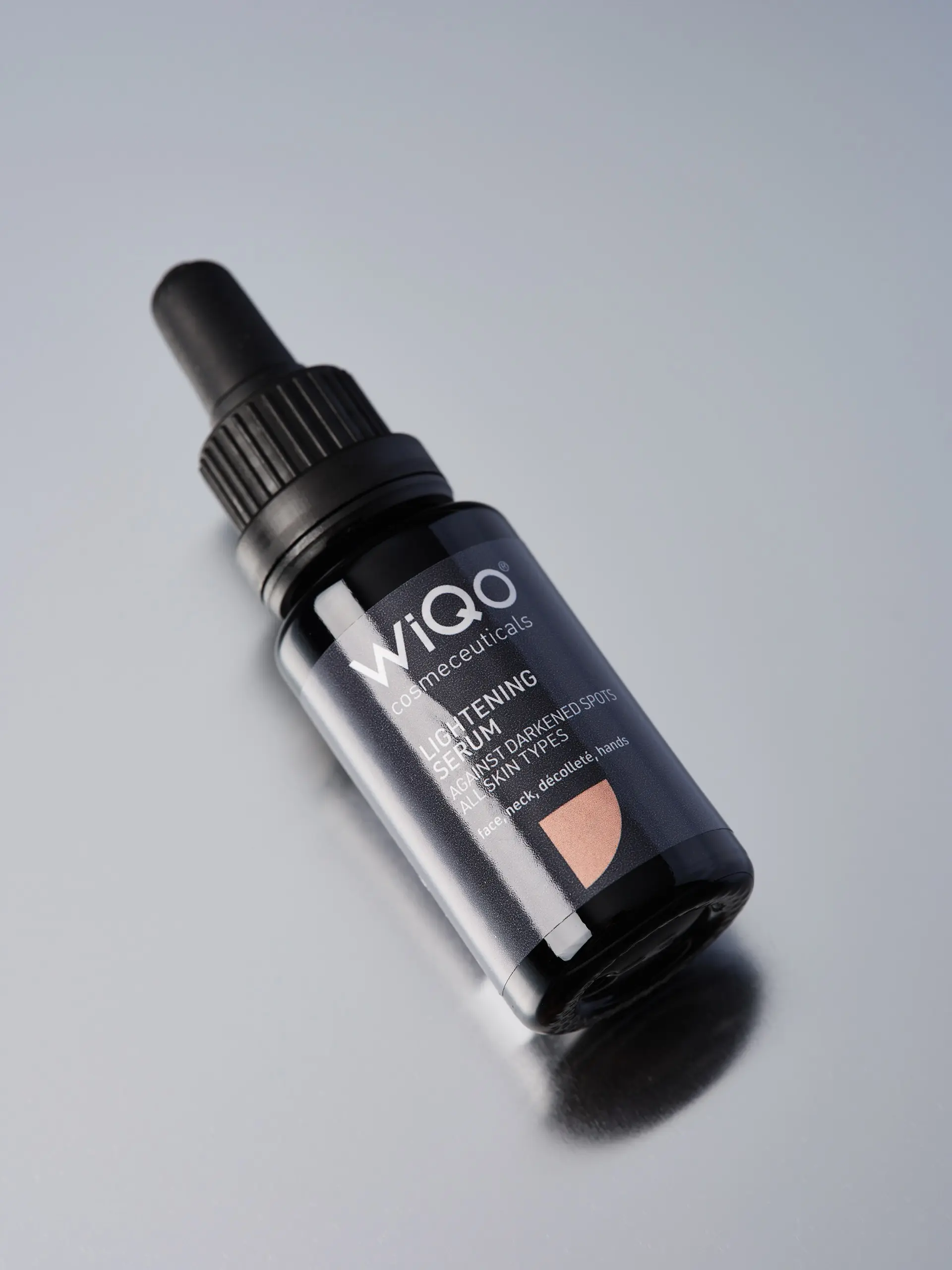


WiQo Lightening Serum
A serum with a velvety texture based on tranexamic acid and other synergistic active ingredients that acts on the skin to prevent and combat blemishes.
- Reduces the appearance of blemishes
- Reduces the signs of aging
- Promotes radiant-looking skin
- Protects from sun damage
- Prevents and combats dark spots
- Regulates skin pigmentation
- Indicated for age spots, sun spots, melasma, post-inflammatory hyperpigmentation
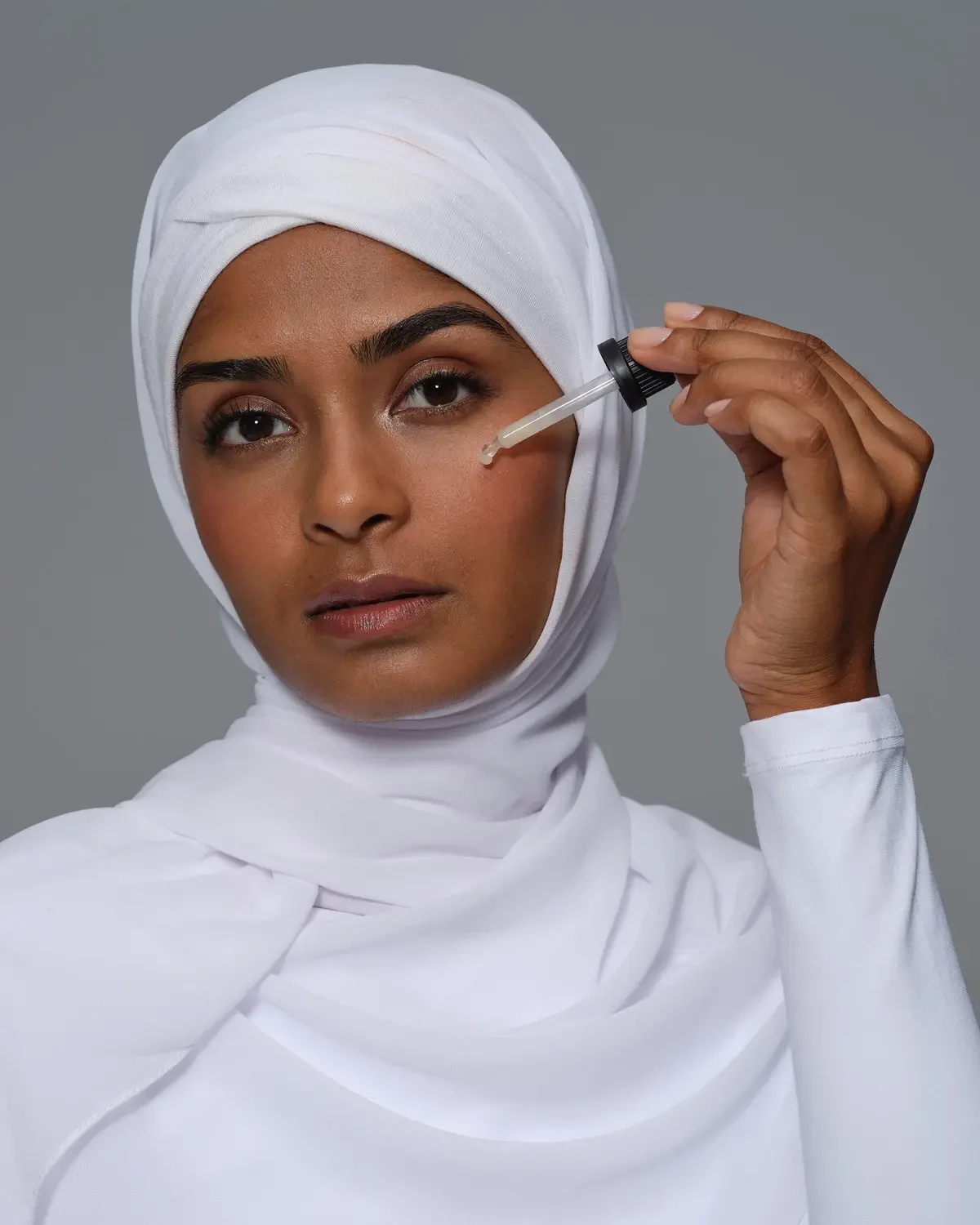
What does it do?
Indicated for age spots, sun spots, melasma, post-inflammatory hyperpigmentation, which often occurs after acne or sunburns/burns, in people who have a high phototype and after invasive medical practices such as peeling and laser. Also indicated for the prevention of hyperpigmentation in patients who tend to develop sunspots or lentigo.
Key Features
- Decreases the appearance of spots
- Reduces the signs of aging
- Promotes radiant-looking skin
- Protects from sun damage
How to use this product
The daily use of the Lightening Serum must be integrated with careful photo-protection: it is essential to apply ICP Cream WiQo or another effective sun filter (SPF 50+) before leaving the house and reapply it again during the day in case of long stay outdoors
-36%
of Hyperpigmentation
Key Ingredients
What does WiQo Lightening Serum contain?
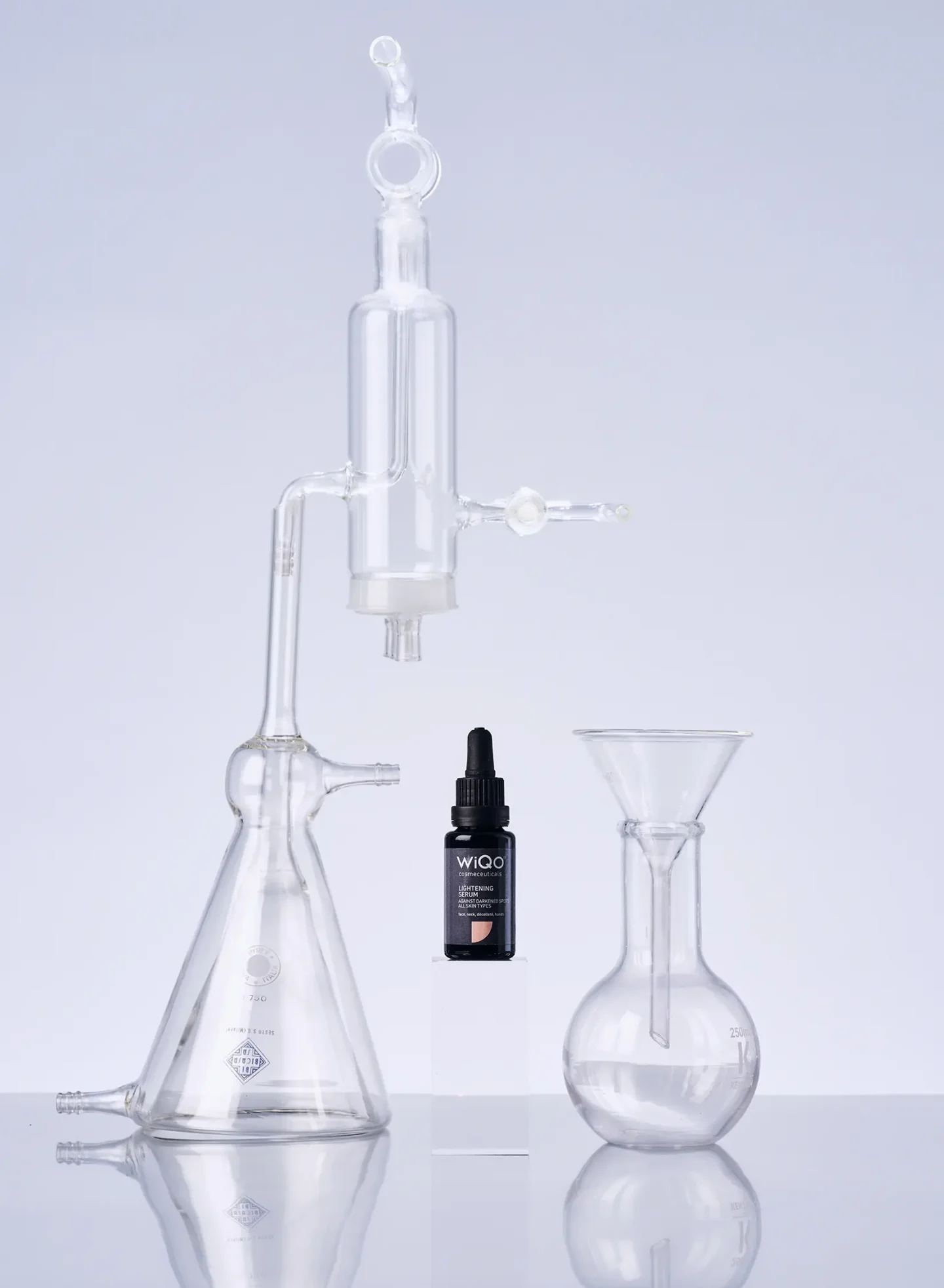
A molecule widely used in the beauty world for its anti-stain and anti-imperfection properties. It is a derivative of lysine (one of the essential amino acids), a molecule used in the dermatological sector to counteract the formation of skin blemishes. It is an inhibitor of melanogenesis, capable of curbing the excessive production of melanin which is generally at the basis of the formation of skin blemishes.
A milk protein with antimicrobial action and iron transporter, with properties that strengthen our immune system. It has a strong preventive antioxidant activity as it is able to block the start of radical chain reactions which are the main cause of skin aging.
An acid with antioxidant properties that help reduce photo-aging and prevent those annoying spots caused by sun exposure.
It is an amino acid. Protective against environmental damage and preventative for pigmentation.
Natural antioxidant active ingredient containing phosphorus which is used in cosmetics for its highly illuminating, lightening and normalizing properties against skin blemishes.
It is a molecule with a strong soothing property extracted from licorice root, which helps to brighten and lighten the skin through an inhibitory activity of tyrosinase, a key enzyme in the synthesis of melanin.
Pair WiQo Lightening Serum with these products.
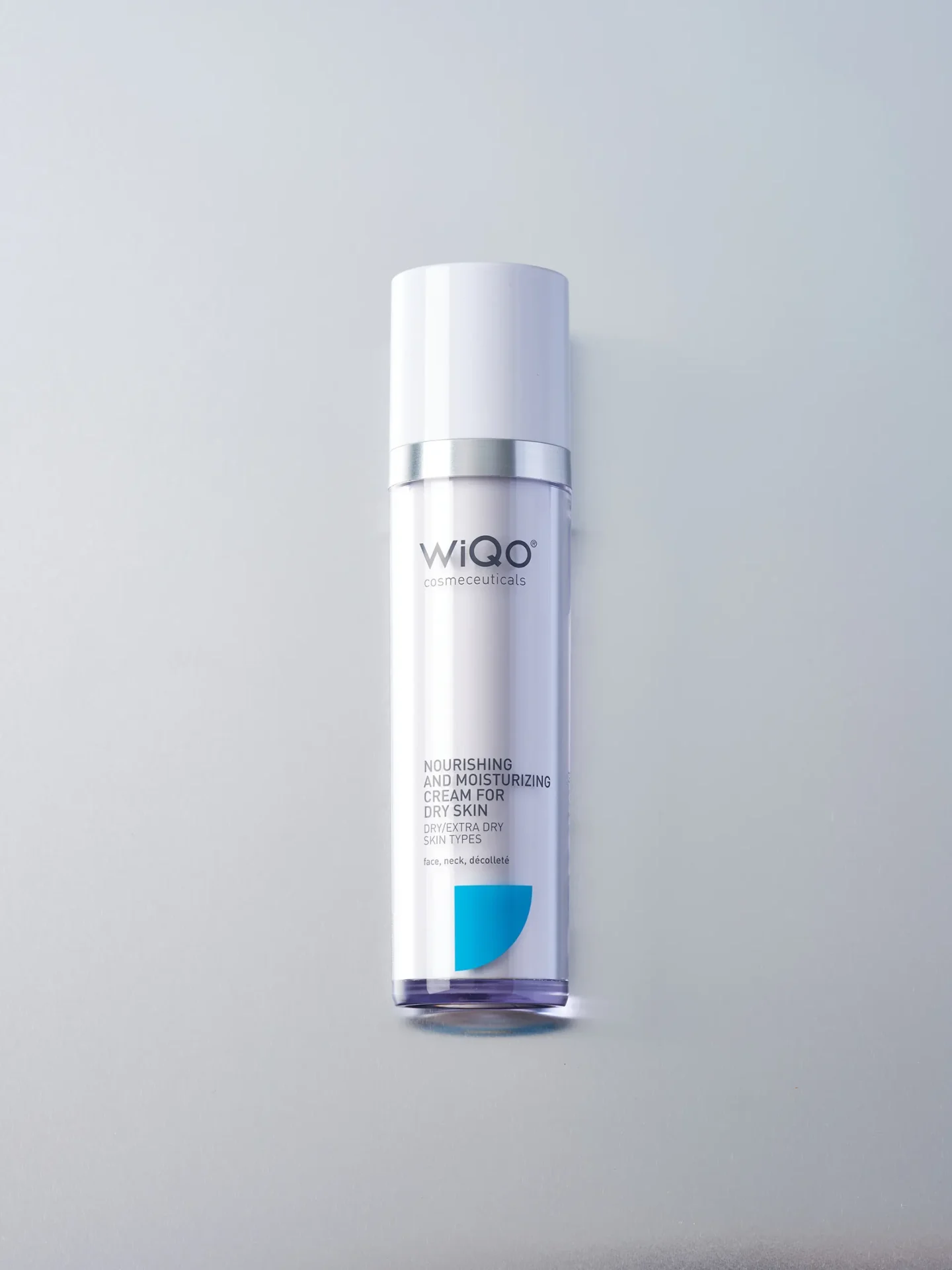
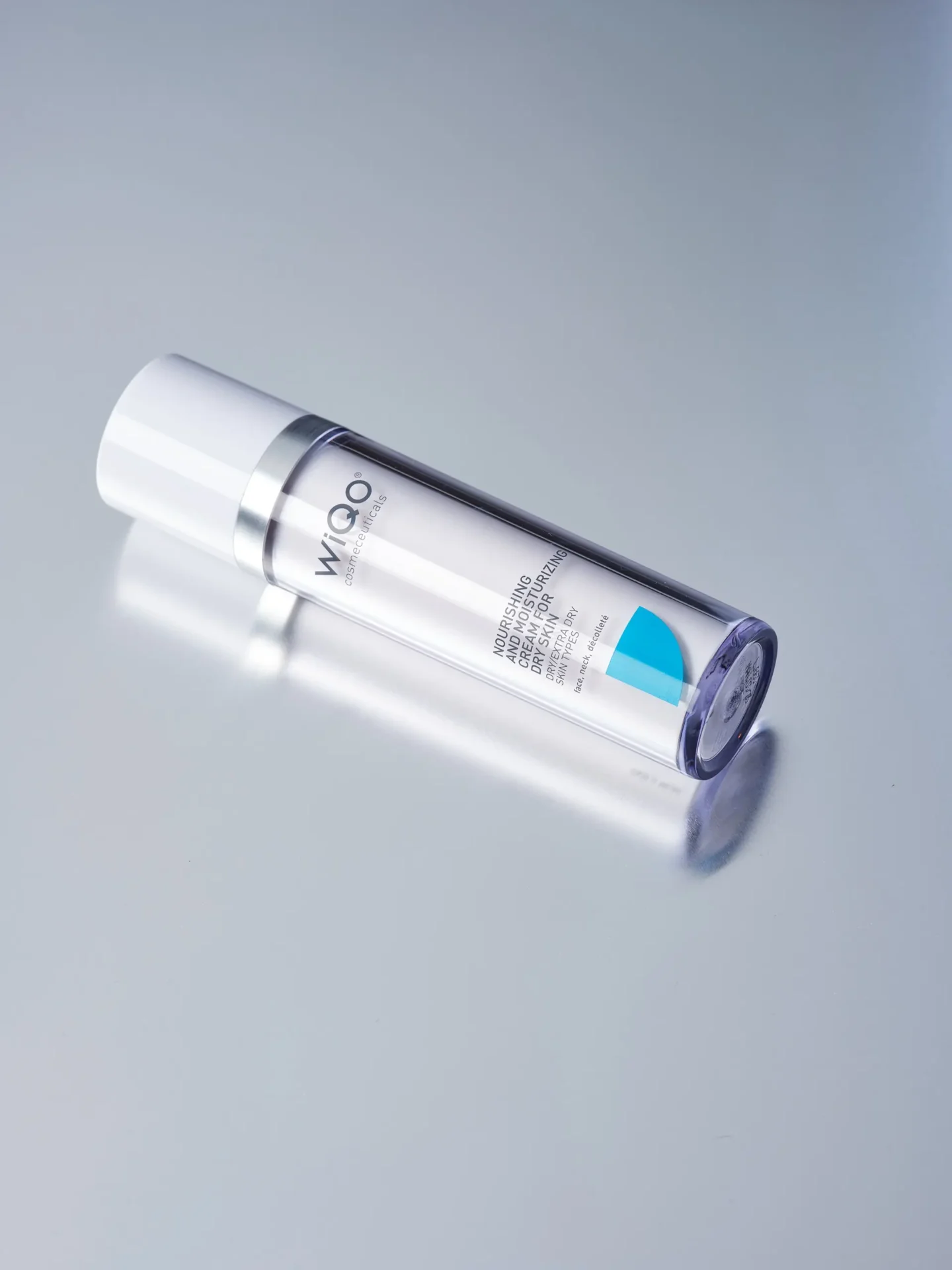
A rich cream with a soft texture that acts on the skin with an intense nourishing and hydrating action. Recommended for its protective action on the superficial layers of the skin. Well tolerated even by the most reactive skin.
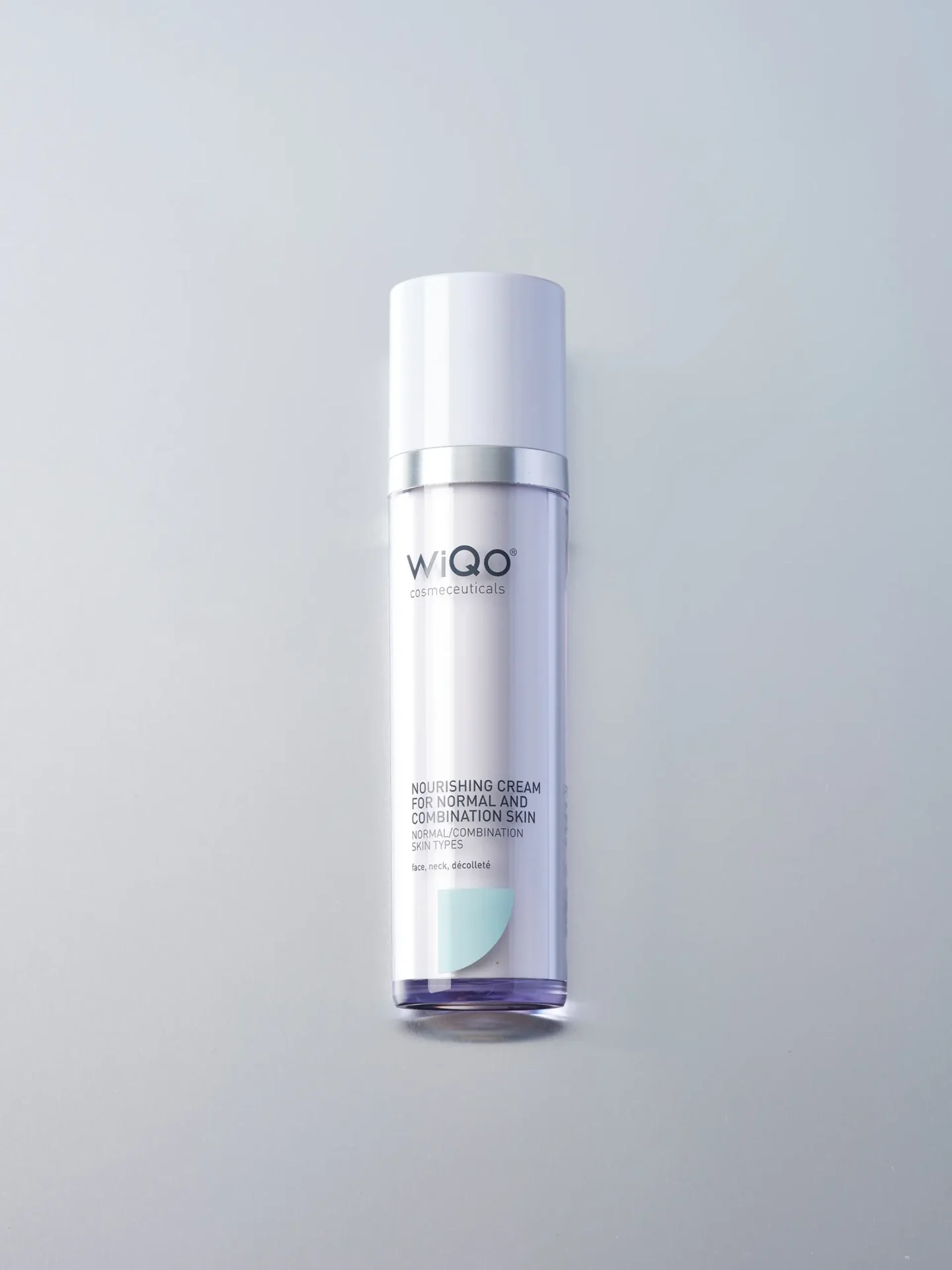
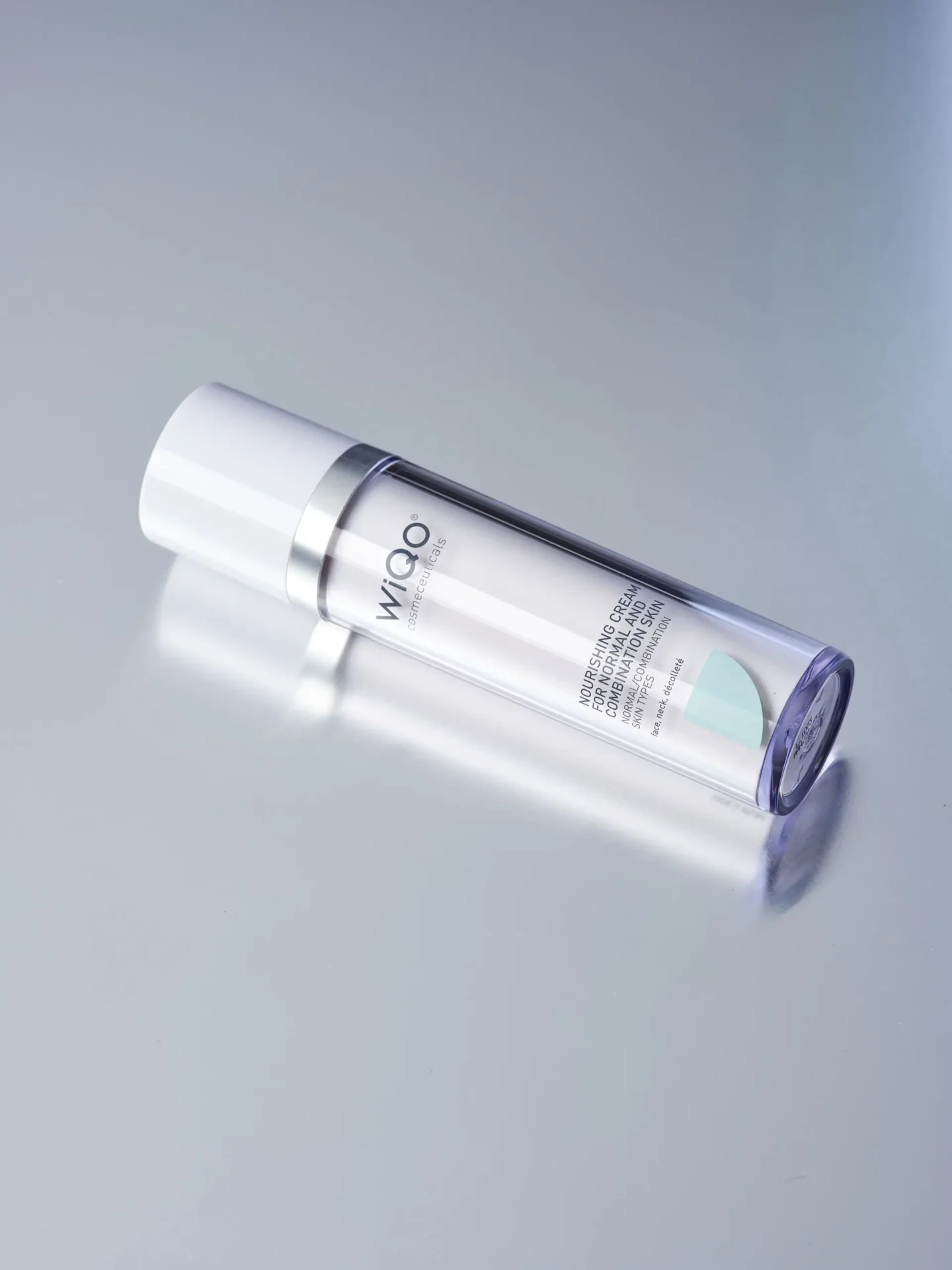
A lotion with a delicate texture, which replenishes normal and combination skin, providing it with all the hydration it needs.
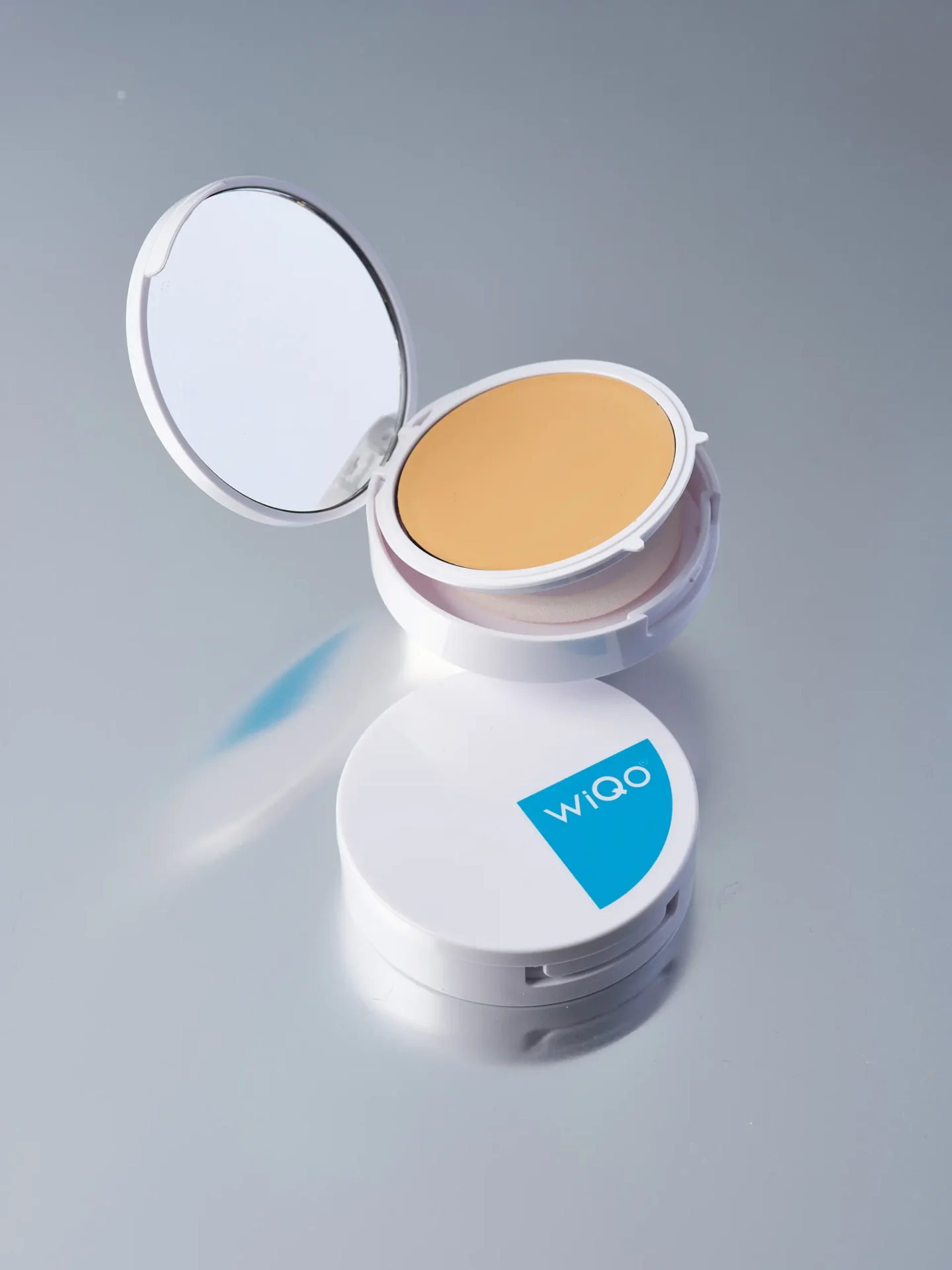
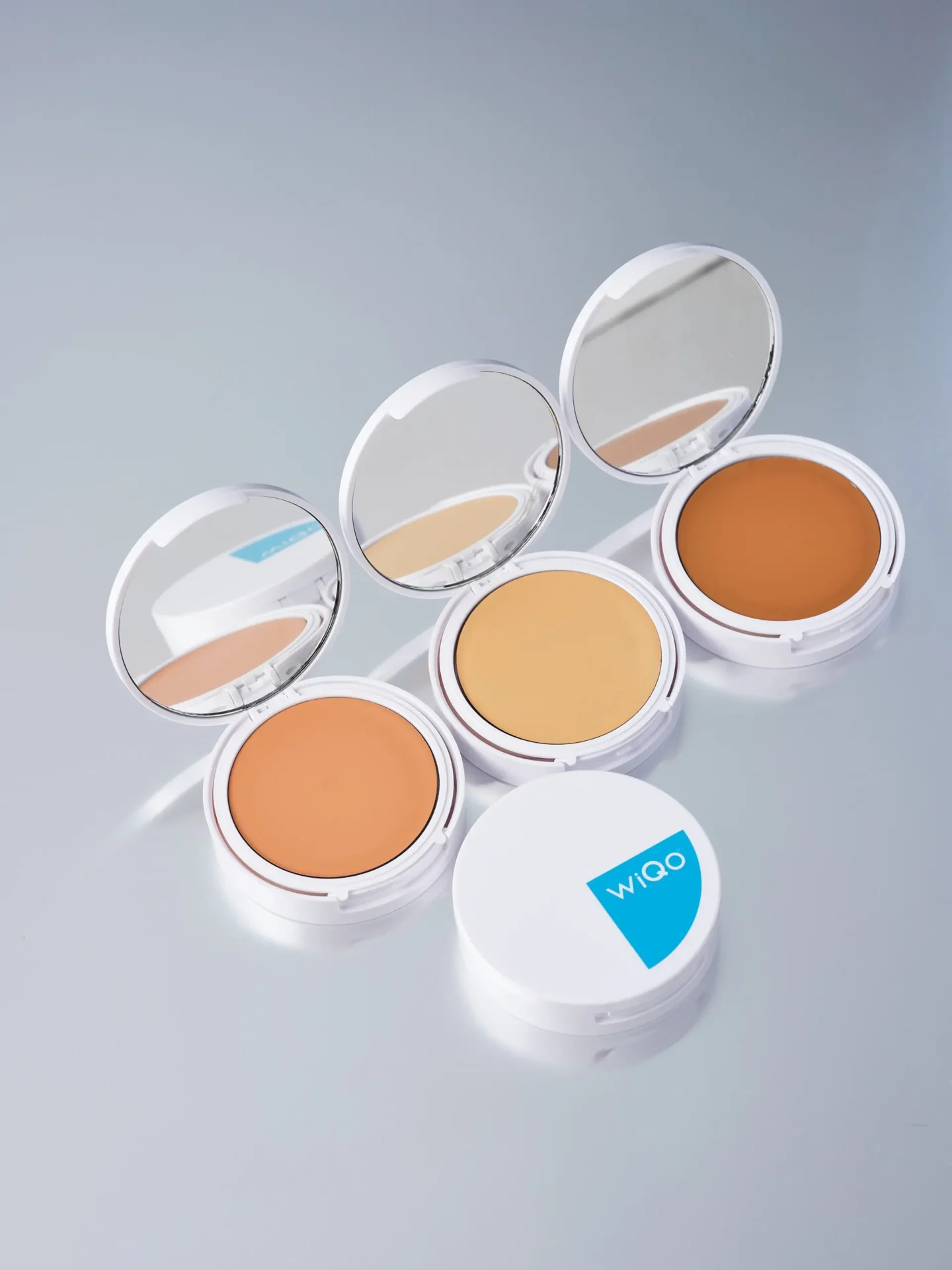
Compact colored cream with an impalpable texture, with SPF 50+. Protects from UBV and UVA rays. 3 different colors.
Any questions about our Lightening Serum? We have the answers to frequently asked questions.
This serum capable of fighting discoloration is suitable for anyone who wants to restore the natural tone and uniformity of the skin. It is ideal for those who have already tried ingredients traditionally used to combat discolouration, without having obtained visible results thanks to the synergistic action of its active ingredients.
No. However, we recommend limiting sun exposure, because if your goal is to reduce dark spots it is important to pay attention to sun exposure. Avoid sun exposure as much as possible, apply sunscreen every day, and use hats and umbrellas, which can be helpful whether you’re using a serum to address discoloration and uneven skin tone or not.
The SPF or sun protection level represents the protection index of sun creams against UVB radiation. This is a protection index calculated based on the time it takes for the skin to develop the erythema. The higher the SPF, the longer you are protected.
By definition SPF is the ratio of the time needed to develop rash with the sunscreen to the time to develop rash without the sunscreen.
If your goal is to reduce dark spots, it is important to pay attention to sun exposure. Avoid sun exposure as much as possible, apply sunscreen every day.
WiQo offers ICP cream, a compact colored cream with a triple action: it creates an extra thin film that nourishes the skin and protects it from UVA and UVB rays thanks to the 50+ protection factor, slows down skin aging, evens out the color of the complexion without “cast effect” hiding small skin imperfections.
What causes pimple spots? The dark spots that form after pimples and remain after healing are caused by pigmentation and are known as signs of post-inflammatory hyperpigmentation because they appear after the inflammation itself (aka the pimple) has healed. To get rid of these hyperpigmentations, the ideal protocol is to use WiQo Lightening Serum twice a day and sunscreen.
“Solar lentigos”, commonly called “skin spots” or “sun spots” appear as irregularly shaped, not well-defined patches, typically in areas exposed to the sun. Their color can vary from hazelnut, to reddish, to brown, to dark brown, while the size can range from a few millimeters up to one or more centimeters. The most commonly affected sites are the face, décolleté, shoulders and back of the hands. The sun is mainly responsible for their onset. In fact, ultraviolet rays interfere with melanogenesis, i.e. the mechanism that leads to the synthesis of melanin (the pigment that colors our skin), with an increase in the production of the latter and the appearance of solar lentigo. “Senile lentigos” are skin spots due to the uneven production of melanin, however they do not appear following prolonged exposure to the sun’s rays; in fact, as the word itself announces, they designate a condition linked to aging. “Freckles”, on the other hand, are a genetically determined condition and are small areas of hyperpigmentation. They are flat, dark or light brown and appear as a single spot or, more often, as a group of specks. Freckles on the face are the most common, but they often appear on the shoulders, arms, chest and back. They are sensitive to sunlight and usually lighten in winter.
Expert Guidance for Optimal Results
